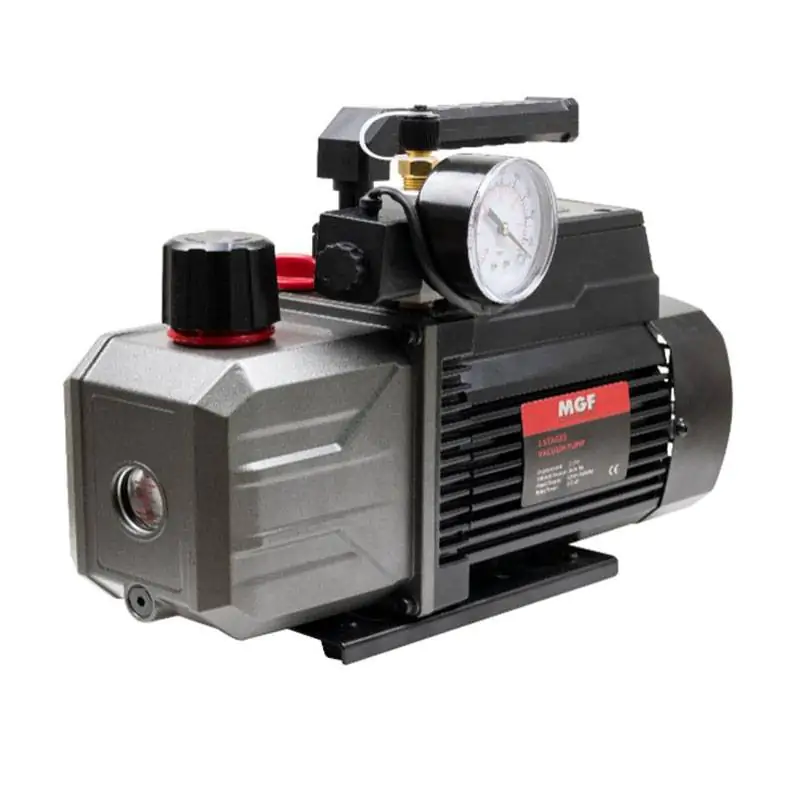Have you bought a split air conditioner and need to remove air from the refrigerant pipes during installation? In this post we will explain how to vacuum the ac, either with a vacuum pump or without, and why it is essential to perform this operation safely.

Index:
- What is the purpose of vacuuming the split AC
- Why it is important to vacuum the AC
- How to vacuum the air conditioner (DIY)
- Vacuuming the air conditioner with a pump
- How to vacuum the AC without pump
- Types of vacuum pumps
What is the purpose of vacuuming the split AC
Vacuuming the air conditioner is a crucial step in the installation and maintenance of air conditioning systems powered by an outdoor motor. This process is used to remove the air and moisture present inside the air conditioner circuits. The presence of air and moisture in the system can cause numerous problems, including the formation of ice, internal corrosion of piping, and a decrease in refrigerant efficiency.
Why it is important to vacuum the AC
The proper removal of air and moisture from air conditioner circuits is essential to ensure optimal and prolonged operation of the system. If air and humidity are not removed, several problems can occur:
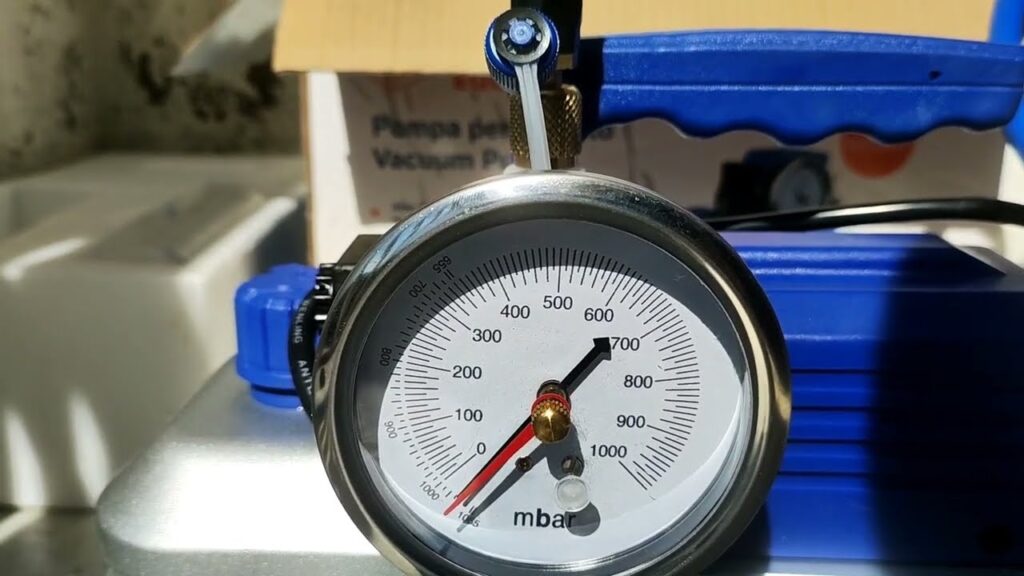
- Reduced efficiency: Air and humidity can reduce system efficiency, making the compressor work harder and increasing energy consumption
- Corrosion: Moisture can cause internal corrosion, reducing the service life of air conditioning components
- Ice formation: moisture can turn into ice at cold spots in the system, blocking refrigerant flow and damaging the compressor
- Performance loss: An air conditioner with air and humidity in the circuits does not effectively cool the ambient air, reducing the reducing occupant comfort
How to vacuum the air conditioner (DIY)
As mentioned earlier, this process is really important for the good condition of the air conditioner and it is equally important to do it safely.
For this reason, our advice is to rely on a qualified professional to make sure that everything is done properly, avoiding possible future problems with the system.
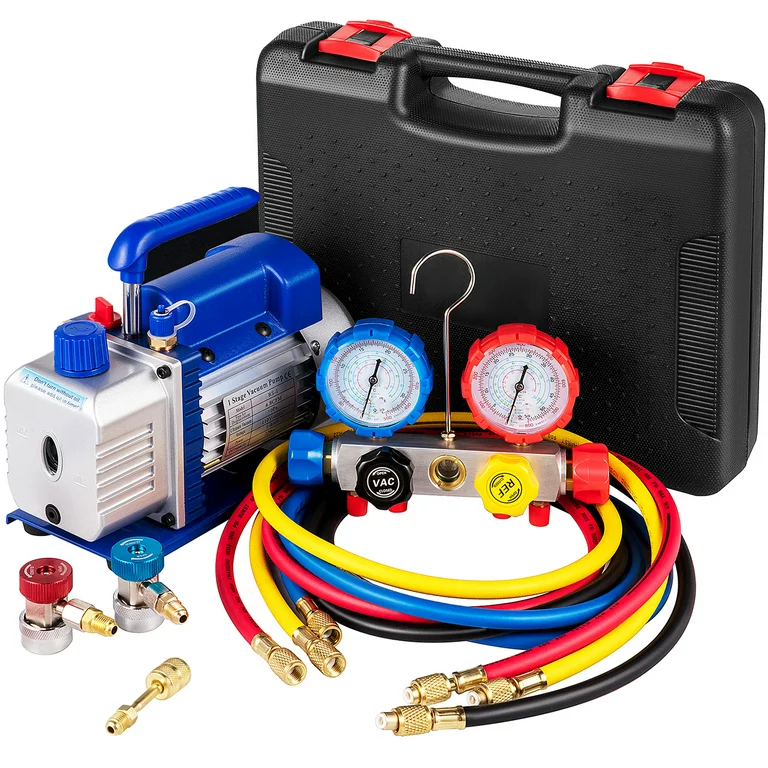
However, the purpose of this article is to describe the different methods of vacuuming the air conditioner, in order to understand the process.
There are two main methods for vacuuming a DIY air conditioner: using a vacuum pump or using alternative methods without a pump. We will analyse both techniques below.
Vacuuming the air conditioner with a pump
Vacuuming with a pump is the most professional and effective method. Here are the steps to follow:
- Preparation: Connect all pipes between the indoor and outdoor units, taking care to leave the gas valves closed
- Pump connection: Connect the vacuum pump to the service valve (the one connected to the largest refrigerant pipe, i.e. the one carrying the gas) with a needle valve on the AC’s outdoor unit
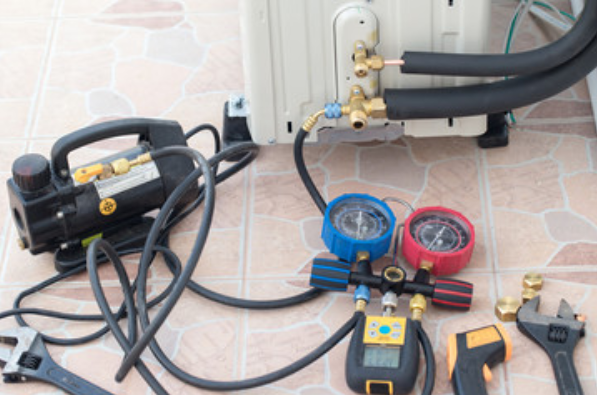
- Pump activation: Switch on the vacuum pump and let it work. The time required may vary depending on the size, the length of the pipes and, in general, the complexity of the system. In fact, we can go from about 3-5 minutes for a shoulder-to-shoulder installation (i.e. with a short distance between the indoor and outdoor unit) to more than an hour in the case of complex systems
- Vacuum check: Use a manometer to check that the system has reached a value below zero
- Check: Check for leaks and make sure the system maintains vacuum. Wait a few minutes and check the level of the manometer again, ensuring that it remains around the previously measured value. If the vacuum remains stable and the pressure gauge shows no significant variations, the air conditioner is ready to be used
- Remove the pump: at this point you can remove the pump, open the gas and start the system
How to vacuum the AC without pump
If you do not have a vacuum pump, an alternative method is possible, although less effective and not recommended for professional use.
- Pipes connection: connect all pipes between the indoor and outdoor unit
- Unscrewing the nut: slightly unscrew the union nut at point B in the image below

- Remove the cap at point A and open the valve inside a quarter turn with a hexagonal key. In the case of shoulder-to-shoulder installations, it is therefore sufficient to wait just 30 seconds so that the gas ‘pushes’ the air out
In other words, this operation, thanks to the pressure difference, will allow the air inside the pipes to escape before the gas - Re-tighten the nut at point B as soon as 30 seconds have elapsed since the previous step to avoid gas leaks
- Closing and final opening: At this point we completely open the valve at point A, open the cap at point C and again with the hexagonal key completely open the valve below. Then replace the cap at points A and C.
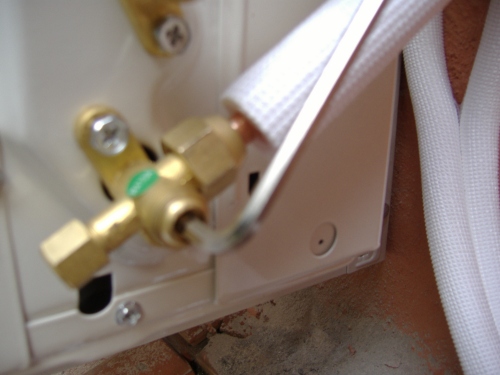
Types of vacuum pumps
There are different types of vacuum pumps that can be used to vacuum the air conditioner, each with specific characteristics:
- Single-stage vacuum pumps: These pumps are suitable for small domestic installations. They are cheaper and easier to use, but may not achieve extremely low vacuum levels
- Two-stage vacuum pumps: More powerful than single-stage pumps, these pumps can achieve lower vacuum levels, making them ideal for larger, more complex systems
- Oil-lubricated vacuum pumps: They use oil to lubricate the internal components and create a more effective vacuum. They are very common and offer high performance
- Dry vacuum pumps: They use no oil, reducing maintenance costs and the risk of system contamination. They are ideal for applications where vacuum purity is essential
Vacuuming the AC is a crucial step in ensuring the efficient and long-lasting operation of the system. Using a vacuum pump is the most effective method, but in its absence, alternative, albeit less recommended, methods can be adopted. Choosing the right vacuum pump and carefully following the steps described will result in a system free of air and moisture, optimising the performance of the air conditioner.
You might also be interested in:
- The best air conditioners of 2024: Top 10
- Air conditioner installation: installation guide
- How to clean your air conditioner: practical tips

